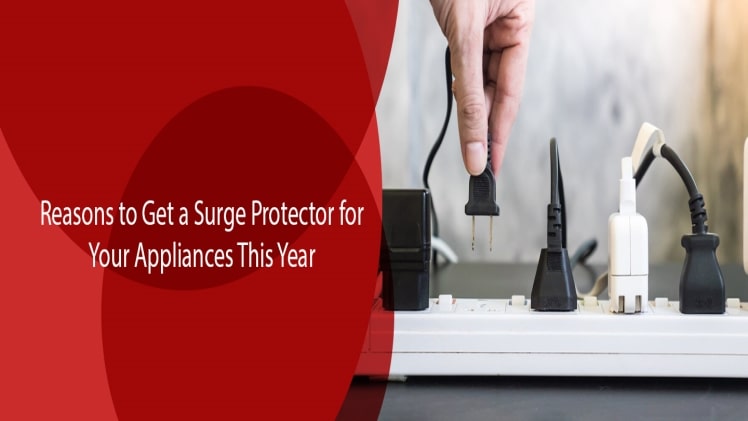Surge protectors, like many other devices, have recently become increasingly popular in houses. People use so many devices at the same time during the day as a result of technological advancements that they take them for granted and eventually lose their significance. Most of us want to have the best appliances in our homes, yet we frequently take them for granted. A primary power supply is required by the majority of the devices we use on a daily basis. Overvoltage, on the other hand, may cause the power to be turned off. This sudden surge in voltage can do serious damage to your equipment, which is why you should protect it with a surge protector.
Surge protector
Surges happen when a device receives too much voltage. This is far more than required. Voltage fluctuations or spikes are other names for them. It just lasts a few seconds, yet it is enough to ruin the appliances. Surge protectors are installed on the device to prevent voltage peaks. This does not fully safeguard the device from all damage, but it does keep it from becoming permanently damaged. These essentially aid the device’s ability to withstand oscillations.
A typical surge protector supplies electricity to multiple devices via power strips linked to a wall outlet. If the voltage exceeds a safe level, the safeguard diverts the excess current to the outlet’s ground wire. The ground wire is connected to the hot and neutral wires in a straight line. They provide a path for current to follow in the case of a failure in a system of usually carries current hot and neutral power lines.
It’s worth noting that not all surge protectors are power strips. Although they are quite similar, the power strip’s main purpose is to provide additional plug space. Take a look at the bundle if you want to know exactly what you’re getting. Surge protectors are labeled with a Joule value. A joule is a unit of energy measurement. This value indicates how long the device has been protected. A joule functions as a reservoir. When the protector fights a surge event, it suffers a hit, and Joules wears down over time.
Surge protection can be divided into two categories
First and foremost, primary surge protectors are very huge surge protectors that you may not have enough space for. As a result, these are connected to the main power line at the point where the wiring enters the structure. The best part is that it safeguards any devices connected to these important connections. Because they have access to the internal wiring, these are effective.
Secondary surge protectors are the most frequent and take up the least amount of space. Simply connect them to your gadget to protect it from power surges. As a primary surge protector, however, it may be less effective. These are simple to use and transport. A socket strip is one example. They cut the power as soon as they can.
What are some of the benefits of using a surge protector?
Surge protection for appliances is quite useful. Surge protection devices have integrated circuits of their own. This single gadget protects your appliances from voltage spikes and catastrophic currents. It is simple to install a surge protector. It’s simple to use and maintain, and you don’t need to be tech-savvy to do so. The idea that surge protectors keep the gadget secure is maybe the most significant reason to consider. Yes, surge protection keeps your gadget safe and lowers the expense of repairs.
Are there any drawbacks?
Surge protection has the drawback of allowing you to only manage voltage fluctuations to a certain level. The entire circuit will be damaged if the voltage surpasses this limit. Before you put the surge protector in your equipment, you must also understand how to use it effectively. Improper use can result in a fire. Another risk is that surge protectors do not last indefinitely. They routinely issue warnings or turn off the device.
Practicality
When selecting a surge protector for your gadget, be cautious. Determine the number of gadgets in your home, then prioritize them according to the voltage they work at. Then figure out which ones require more electricity. You can also prioritize gadgets based on your financial resources. It’s not a good idea to use a surge protector with a light bulb or ceiling fan, for example.
Surge protectors, on the other hand, are required for equipment such as computers with memory and voltage-sensitive components. Surge protection is also required for other devices that are susceptible to voltage fluctuations, such as washing machines, televisions, and game consoles. Surge protectors can also help to extend the life of your equipment.
Final thoughts
This page provides a comprehensive overview of surge protection. It outlines the benefits and drawbacks that may assist you in purchasing a surge protector for your home. Before you acquire one, you might want to do some more study on your own. Surge protection is no longer an option; it’s a need. You don’t want to lose track of the valuable equipment you’ve spent money on. As a result, make an informed decision.
To know more information about: free sab result

